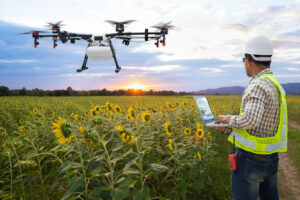
In the ever-evolving field of land surveying, technological advancements have played a crucial role in revolutionizing the way surveys are conducted. As industries continue to embrace innovation, land surveyors are also leveraging cutting-edge technologies to enhance accuracy, efficiency, and overall project success.
Unmanned Aerial Vehicles (UAVs) and Remote Sensing:
Unmanned Aerial Vehicles, commonly known as drones, have transformed the way land surveys are conducted. Equipped with high-resolution cameras and LiDAR sensors, drones can capture detailed aerial imagery and collect precise data points in a fraction of the time it takes for traditional surveying methods. This technology enables land surveyors to map large areas, monitor construction sites, and gather valuable geospatial information quickly and safely.
Global Navigation Satellite Systems (GNSS):
GNSS technology, including GPS (Global Positioning System), GLONASS, and Galileo, has become an integral part of modern land surveying. These satellite-based systems provide accurate positioning data, allowing surveyors to establish precise control points and determine accurate coordinates on the Earth’s surface. GNSS technology improves surveying efficiency, reduces human error, and enhances the overall accuracy of survey data.
3D Laser Scanning:
3D laser scanning, also known as LiDAR (Light Detection and Ranging), has revolutionized the way land surveyors capture detailed information about the terrain and built environments. By emitting laser beams and measuring their reflections, LiDAR scanners create precise 3D point clouds, representing the surveyed area in high resolution. This technology enables surveyors to capture complex structures, generate accurate digital terrain models, and support various applications such as infrastructure development, urban planning, and archaeological preservation.
Geographic Information Systems (GIS):
Integrating land surveying with Geographic Information Systems (GIS) allows surveyors to manage, analyze, and visualize survey data in a spatial context. GIS technology enables land surveyors to overlay survey data with various geographical layers, such as property boundaries, topography, and infrastructure networks. By leveraging GIS, surveyors can make informed decisions, identify spatial patterns, and provide valuable insights to clients and stakeholders.
Augmented Reality (AR) and Virtual Reality (VR):
Augmented Reality and Virtual Reality technologies have started to find their way into land surveying, offering exciting possibilities for data visualization and project planning. By overlaying survey data onto the real world or creating virtual environments, surveyors can provide immersive experiences, simulate design scenarios, and facilitate better communication with clients and project teams. AR and VR technologies enhance collaboration, reduce project risks, and improve client understanding of survey results.
If you’re in need of any land surveying services, please reach out to us. Contact BLAZE Design Inc. at 802-442-2892 today or visit us online for more information!
